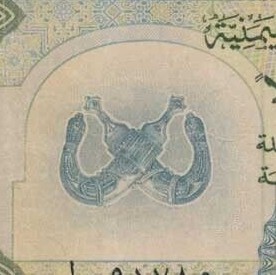Oman, U.A.E and Yemen
Banknotes with Khanjars – The Arab Dagger
One of the Arab worlds most iconic images may be the sheathed dagger worn at the waist of many men still today. It is such an important piece of Arab culture that they have made it onto stamps, photos, coins, company logos and even banknotes of Oman, the United Arab Emirates (U.A.E.) and Yemen.
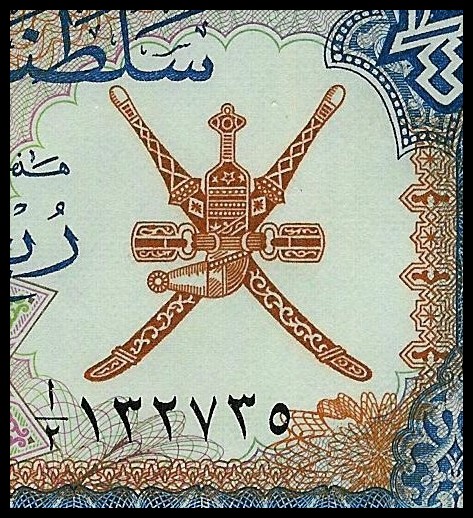
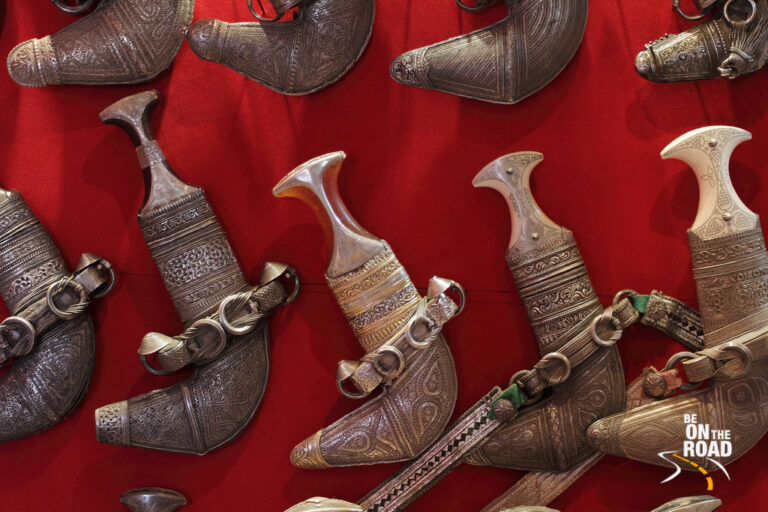
The Khanjar has four components: Handle, blade, sheath and belt. The sheath is made of wood and covered with leather and silver/gold which is highly engraved. has metal rings used to attach the dagger to the belt which is often made of silk or cotton. The tip of the sheath is known as the chapre and is covered with silver.
The earliest known reference to the Khanjar dagger dates back to 1672 when a Dutch trader noted the dagger carved into a grave marker. While the blade is obviously a weapon and a tool, it is mostly used as a male status symbol in the modern world. Today the Khanjar serves as an important link to family history, tribal ancestry and manhood. It is a common gift to grooms when they are married, and to young men as they reach adulthood. As the use of the knife has largely been reduced to a ceremonial item, one modern view among some people includes that it is a serious breach of etiquette if the blade is drawn against another frivolously. Drawing the blade from its sheath is only to be done in serious situations where one would absolutely need to resort to it for defense, and one that would require the blade to be blooded by the owner’s own blood if not the offenders.
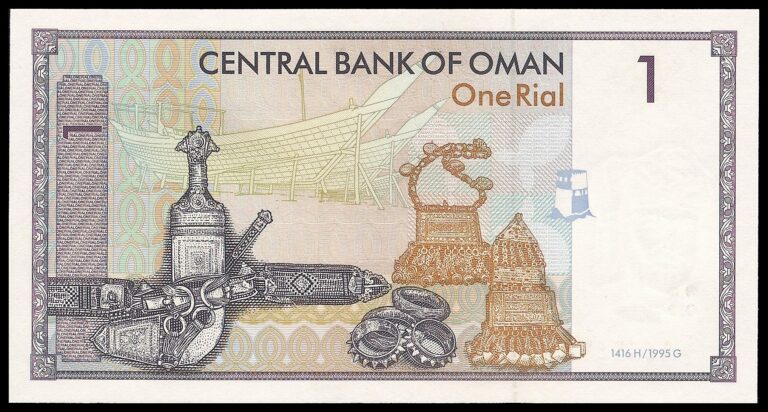
The distinctive look of the dagger is one that is clearly identifiable worldwide as an icon of the Arab world. They are often made of silver with intricate designs on the handles, blades and sheaths. While the sheath itself is in a J-shape, the blade is less curved for practical reasons.
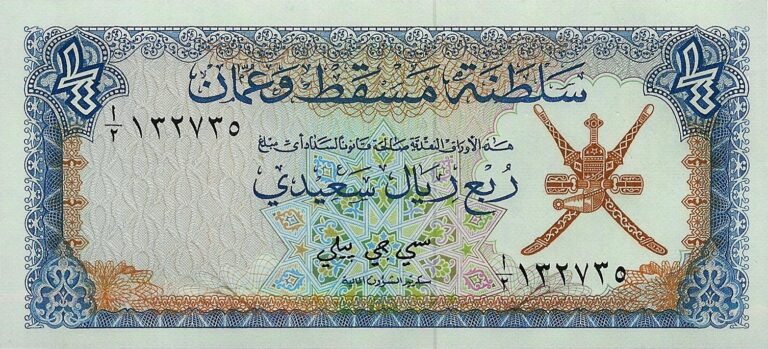
The origin of the Khanjar is thought to have been in Oman, but it can be found throughout the Middle East and as far north as the Balkans (where it is known as the Handschar) and East into Asia.
In Oman the Khanjar is on their coat of arms, along with crossed swords. As it is their national emblem, the coat of arms appears on the Omani Rial banknotes. In more recent years it has been used as a see-through register image for anti-counterfeiting purposes, and the One Riyal banknote has had it as a prominent image on the reverse on issues in 1995 and again in 2020.
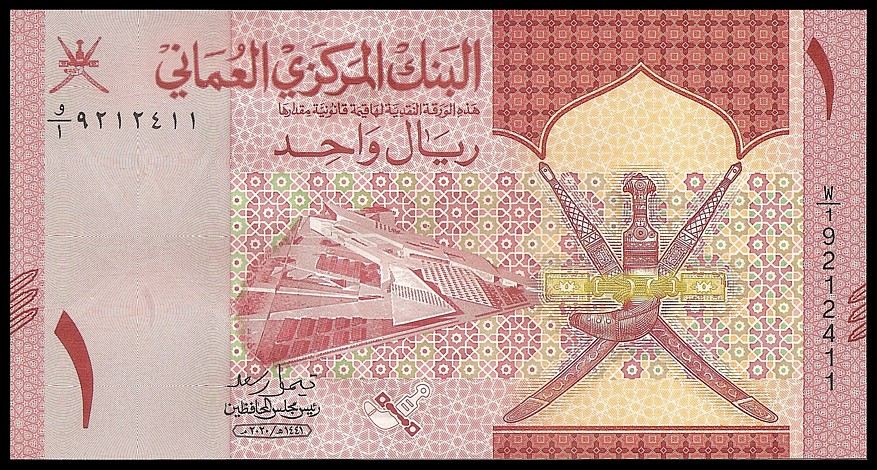
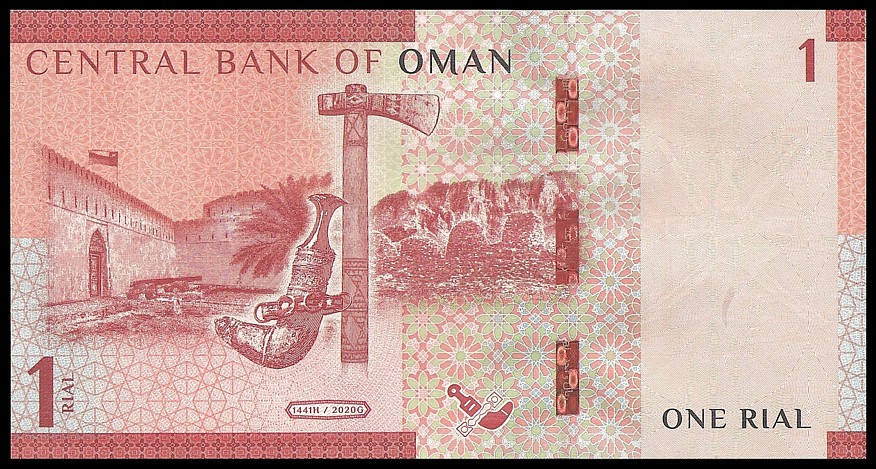
Daggers are often made to order for the owner, and while many are made of silver in the modern age, they have also been made of several types of metals in the past. Wealthy and Royal clients would typically have gold as a major element, while brass, copper or iron would be used for the less wealthy and those who may use them more often as a tool rather than as a status symbol.
Rhinoceros horn and Ivory were traditionally used for the handles, but as modern limitations on such materials from endangered animals have limited those materials, they have been substituted and camel bone is now rather common.
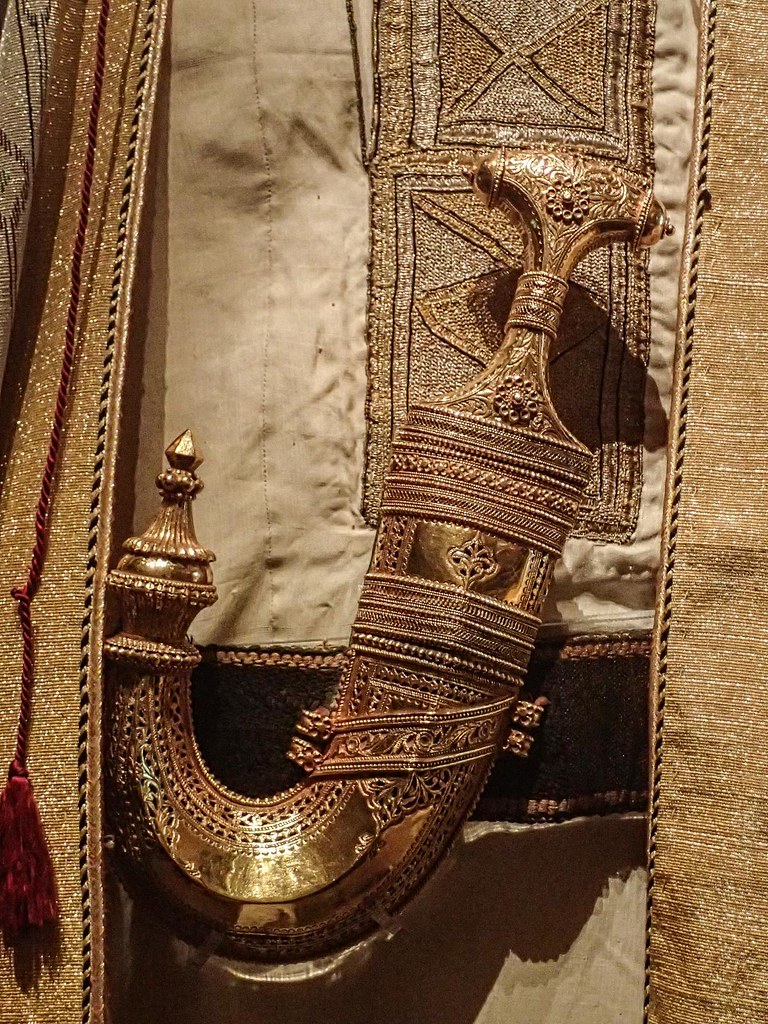
This khanjar ceremonial dagger was presented to T. E. Lawrence aka Lawrence of Arabia in the early 20th century and is now in the Ashmolean Museum.
Photo: mharrsch is licensed under CC BY 2.0.
In the Emirates, the Khanjar is slightly different. The blade is smaller and thinner than most other regions, and the point has more of a curve, and is typically worn for ceremonial purposes these days, but in other regions in the Arab sphere (where it is also known as a Jambiya) it is still a common occurrence to see them worn in everyday situations, tied around the waist.
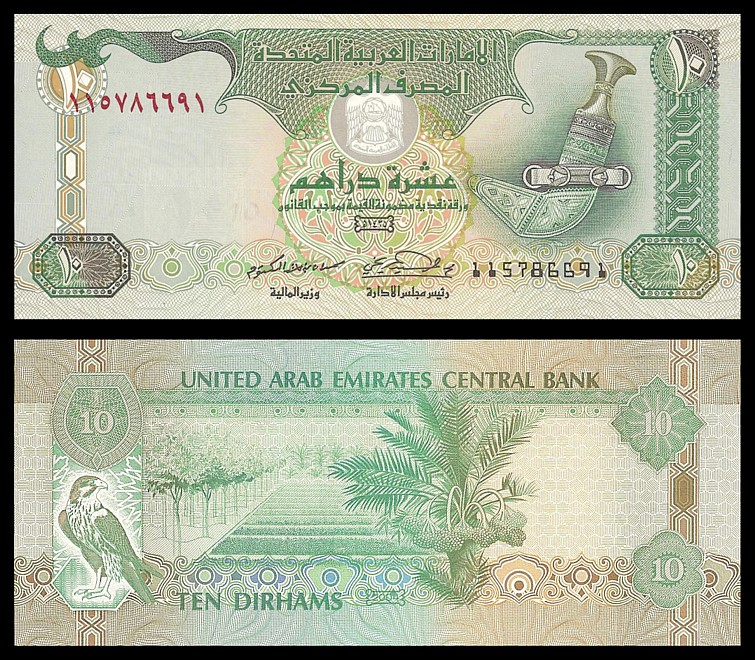
The United Arab Emirates 10 Dirhams banknotes was identifiable for its large depiction of the Khanjar, a dagger-type knife sheath in a J-shaped holder. It was on the banknotes issued from 1982 – 2022.
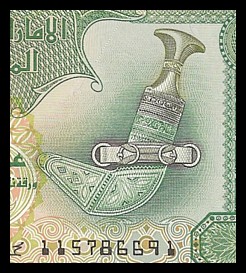

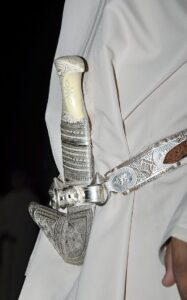
In recent years efforts have been made in the UAE to promote the Khanjar’s heritage and history through cultural programs aimed at education including promotional viewings of historical Khanjars, workshops demonstrations of manufacturing processes, and museums dedicated to the Khanjar. These programs are designed to create more awareness of the types of craftwork needed to make them, including metal, leather, resin and woodworking.

